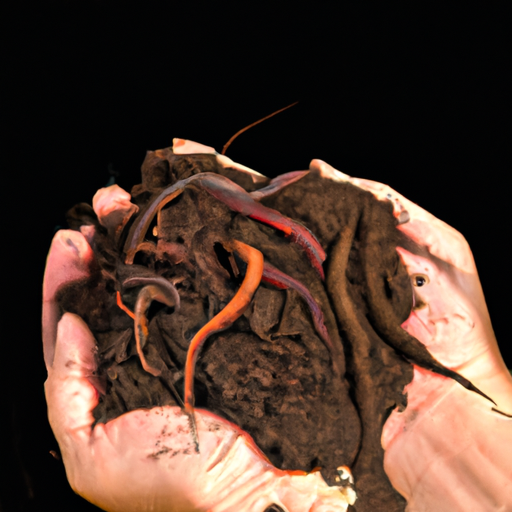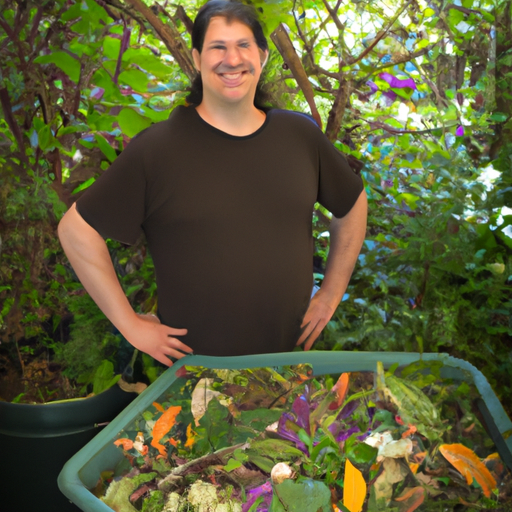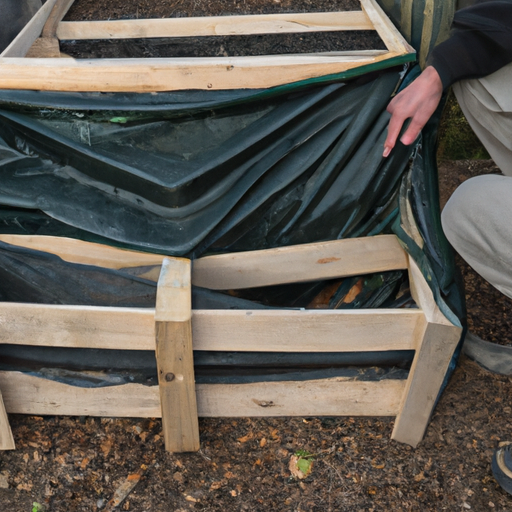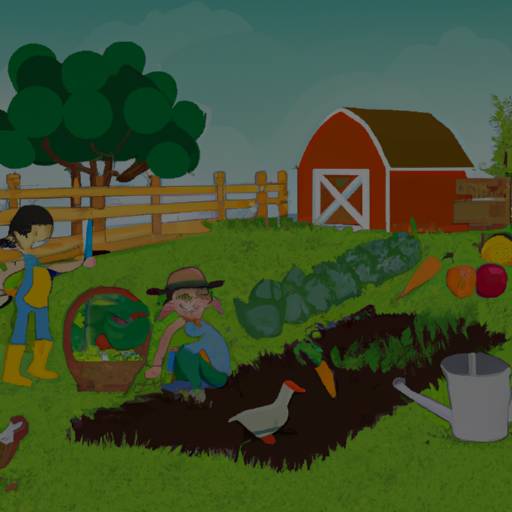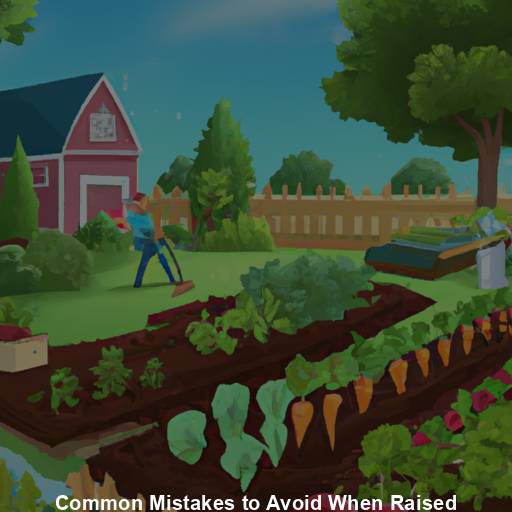If you’re a gardener, then you know the importance of mulching. But did you know that there are many benefits to using mulch beyond just weed suppression?
As a Master Gardener with years of experience, I’ve seen firsthand how maximizing the benefits of mulching can lead to healthier plants and more bountiful harvests.
First and foremost, mulch helps retain moisture in soil which is crucial during hot summer months. By keeping the soil cool and moist, it reduces stress on plants’ root systems and keeps them from drying out too quickly.
Mulch also provides an insulating layer over roots, protecting them from extreme temperatures both hot and cold. Additionally, it prevents erosion by reducing water runoff from heavy rainfall or irrigation.
These benefits alone make mulching worth your time and effort! However, there’s so much more you can do to maximize its potential for your garden.
Moisture Retention For Healthier Plants
As Master Gardeners, we know the importance of water conservation and plant hydration.
One way to ensure our plants get enough moisture is by mulching. The right mulching depth can reduce evaporation and retain soil moisture, keeping your garden hydrated for longer periods.
Mulch acts as a barrier between the sun’s rays and the soil, preventing it from drying out too quickly. This means you’ll need to water less frequently, saving both time and resources in the long run.
By incorporating proper mulching techniques into our gardening routine, we can maintain healthier plants while reducing our environmental impact – a win-win situation!
Insulating Roots From Extreme Temperatures
As we learned in the previous section, moisture retention is crucial for healthier plants.
Now let’s talk about another important benefit of mulching: root protection and temperature regulation.
Insulating roots from extreme temperatures can help your plants thrive all year round.
Mulch acts as a barrier between the soil and the outside air, keeping the ground cooler during hot summer months and warmer during freezing winters.
This helps prevent damage to delicate roots that could be caused by sudden changes in temperature or weather conditions.
In addition, mulch also reduces water loss due to evaporation, which means less watering is required overall.
By using mulch to insulate your plant’s roots, you’ll create an optimal environment for them to grow strong and healthy throughout the seasons.
Preventing Erosion For Better Soil Health
Did you know that erosion can cause soil loss of up to 100 times faster than the rate at which it is being formed? That’s why preventing erosion should be a top priority for any gardener looking to maintain healthy soil.
One way to prevent erosion is through rainwater harvesting, which involves collecting and storing water from rainfall for later use in watering plants. This technique not only helps reduce runoff but also conserves water resources.
Another effective method is composting techniques, which involve adding organic matter like leaves, grass clippings, and food scraps to your garden beds. Composting improves soil structure and fertility while reducing erosion by increasing the ability of soil to absorb moisture.
Remember, taking steps towards preventing erosion will lead to better soil health and ultimately healthier plants in your garden.
Choosing The Right Type Of Mulch
Choosing the right type of mulch is essential to maximize its benefits. There are two main types of mulch: organic and inorganic. Organic mulches include materials such as bark, leaves, and compost, while inorganic mulches are typically made from materials like stone or rubber. When choosing a type of mulch, consider its properties, including how well it retains moisture and regulates temperature. For example, straw may not be the best choice for wet climates since it can become waterlogged and promote fungal growth. On the other hand, rocks may not be ideal for hot climates because they absorb heat and can dry out soil too quickly. It’s also important to compare organic and inorganic options based on their cost and availability. While organic mulches may decompose over time, they provide valuable nutrients to plants and improve soil structure. In contrast, inorganic mulches can last longer but do not offer any nutritional benefits. Ultimately, the best type of mulch will depend on your specific needs and preferences as a gardener. So take some time to research different options before making a decision that will benefit both your garden and budget!
Mulching Techniques For Maximum Benefits
To maximize the benefits of mulching, it’s important to understand different techniques that can be used.
Mulch layering is a popular technique that involves stacking various types of organic materials on top of each other to create a layered effect. This method not only provides excellent weed suppression but also helps retain moisture in the soil and adds nutrients as the layers decompose over time. However, when using this technique, it’s essential to ensure that there are no air pockets between the layers which may impede water penetration into the soil.
Another factor to consider when choosing a mulching technique is whether to opt for organic or inorganic mulch. Organic mulches such as straw, leaves, and grass clippings break down naturally over time and provide valuable nutrients to plants while improving soil structure. In contrast, inorganic mulches like gravel or plastic do not decompose and require less maintenance but offer fewer benefits to plant health overall.
Ultimately, selecting an appropriate mulching technique depends on your specific gardening needs and preferences. Experiment with different methods until you find what works best for your garden setup – happy gardening!
Frequently Asked Questions
Can Mulching Attract Pests Or Insects To My Garden?
Pest prevention is a crucial aspect of maintaining a healthy garden. While mulching can provide numerous benefits, it could also attract pests or insects if not done correctly.
However, there are natural alternatives to chemical pesticides that can effectively control pest populations without harming the environment. As a Master Gardener, I recommend taking preventive measures such as choosing the right type of mulch and monitoring for signs of infestation regularly.
Additionally, incorporating companion planting and beneficial insects like ladybugs will help keep pests at bay while promoting a thriving ecosystem in your garden.
Is It Necessary To Remove Old Mulch Before Applying A New Layer?
Removing old mulch before applying a new layer is not just necessary, it’s crucial to achieving the full benefits of mulching techniques.
Imagine trying to build a sturdy foundation for your garden without removing the rubble and debris from the previous structure – it simply won’t work!
The same goes for mulching. By removing old layers, you allow air and water to penetrate more easily into the soil while preventing pests and insects from making their home in decaying organic matter.
As a Master Gardener, I cannot stress enough how important this step is in maximizing the benefits of mulching.
Trust me, your garden will thank you for it!
How Often Should I Add New Mulch To My Garden?
When it comes to mulching, timing is everything. The best time to apply new mulch depends on a number of factors, including the type of plants in your garden and the climate you live in.
Generally speaking, it’s best to add fresh mulch once or twice a year for maximum benefits. This can help prevent weeds from taking root, retain moisture in the soil, and regulate soil temperature.
However, before adding new layers of mulch, be sure to remove any old material that may have decomposed over time.
By following these simple tips, you can keep your garden healthy and thriving all season long!
Can Certain Types Of Mulch Harm My Plants Or Soil?
Certain types of mulch can indeed harm your plants or soil. Mulches made out of fresh grass clippings, for example, can cause nitrogen deficiency in the soil and result in stunted plant growth.
Inorganic materials like rubber mulch may contain harmful chemicals that leach into the soil over time. Additionally, using too much mulch can create a barrier between the soil and air which may lead to root rot and other problems.
Bad soil conditions can also negatively affect plant growth, causing wilting, yellowing leaves, and poor fruit production among other issues. It’s important to research different types of mulch before applying them to your garden so you can avoid any potential negative effects on your plants or soil health.
Are There Any Safety Precautions I Should Take When Handling Or Applying Mulch?
When it comes to handling and applying mulch, safety is key.
Proper storage of your chosen type of mulch is crucial in preventing any potential harm from exposure or ingestion.
Additionally, having the necessary equipment on hand, such as gloves and a respirator mask, can further protect you during application.
As a Master Gardener, I emphasize the importance of taking these precautions seriously to ensure not only the health and well-being of yourself but also that of your plants and soil.
Conclusion
In conclusion, mulching is an essential part of any gardener’s routine. It helps to retain moisture in the soil, regulate temperature and suppress weeds. While it may seem like a simple task, there are some important considerations to keep in mind.
As Master Gardeners, we must be mindful of the type of mulch we use and how often we apply it. We should also take care when handling or applying it as certain types can be harmful if not used correctly. Remember that too much of anything can be detrimental, so always strive for balance and moderation in your garden practices.
As they say, ‘a little goes a long way!’

